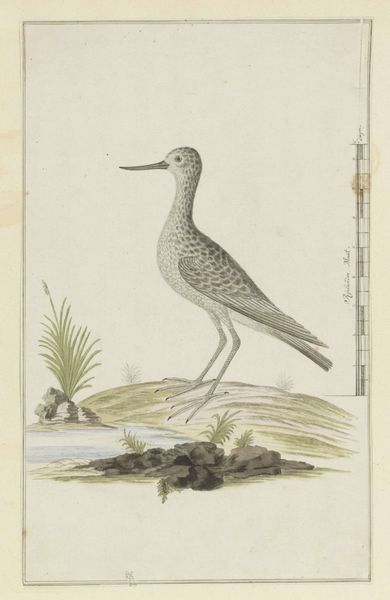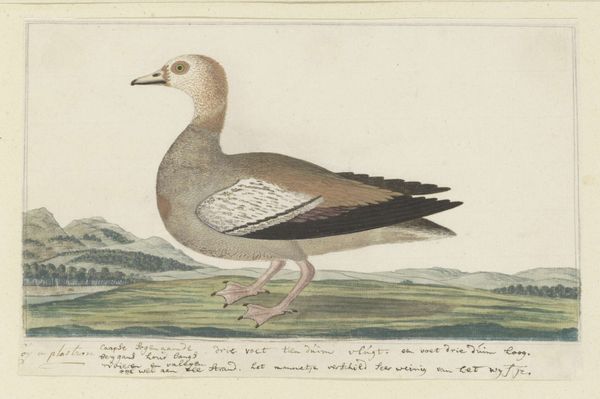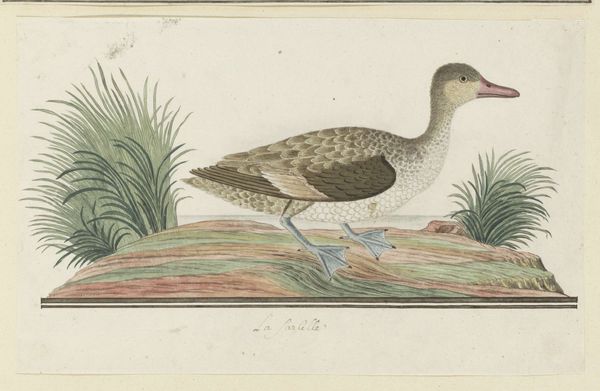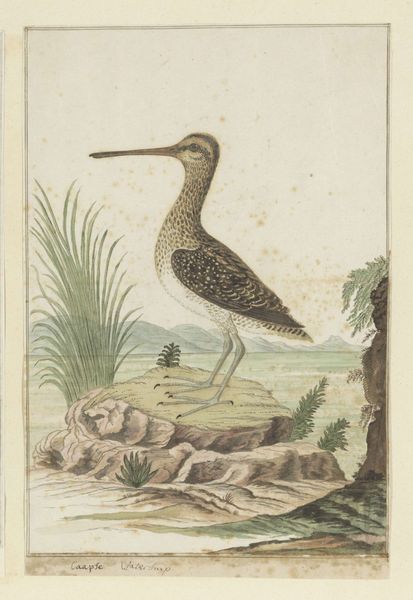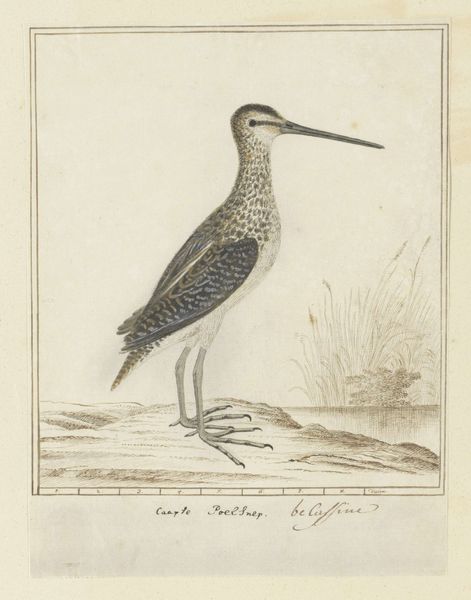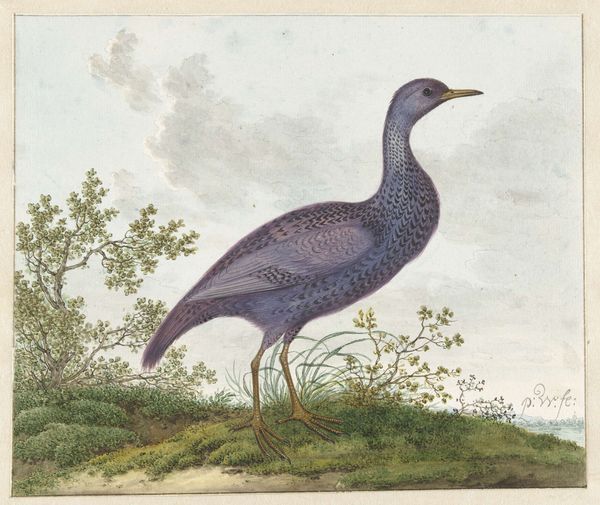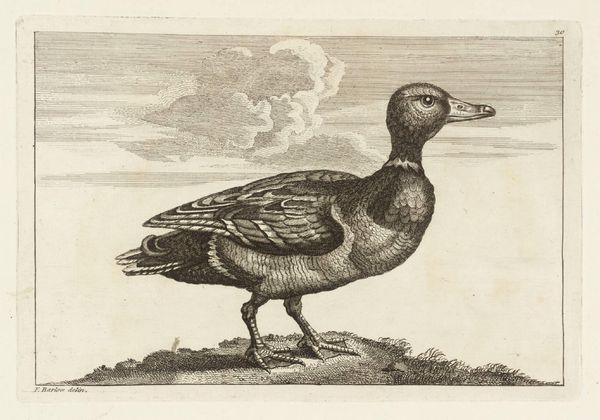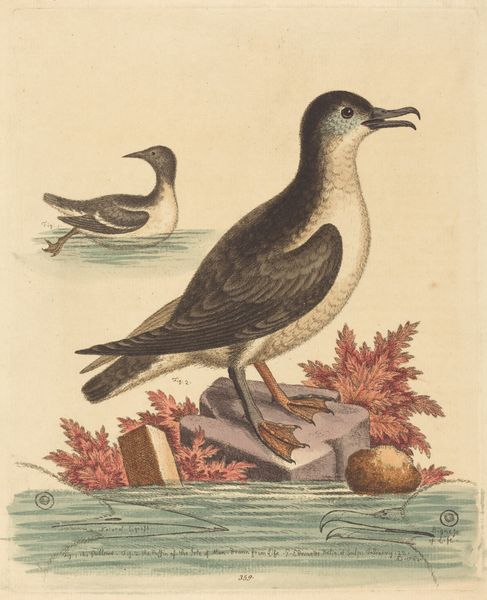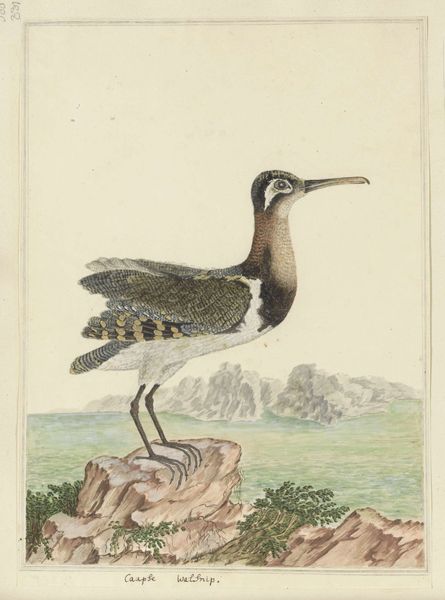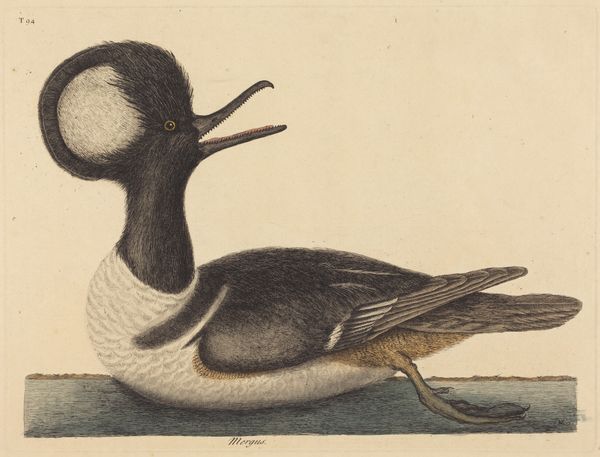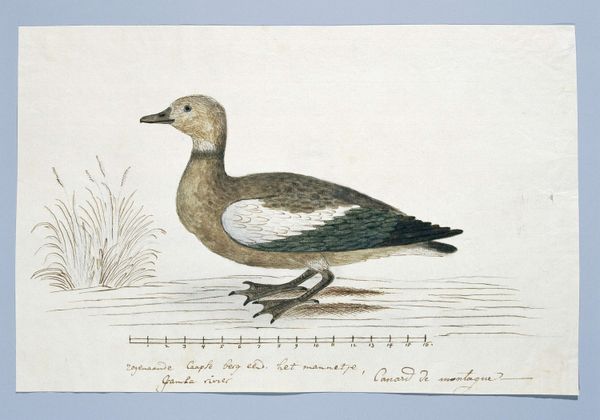
drawing, watercolor, pen
#
drawing
#
aged paper
#
toned paper
#
personal sketchbook
#
watercolor
#
pen
#
watercolour illustration
#
naturalism
#
watercolor
Dimensions: height 660 mm, width 480 mm, height 261 mm, width 414 mm, height mm, width mm
Copyright: Rijks Museum: Open Domain
Editor: So, here we have Robert Jacob Gordon’s "Phalacrocorax capensis," or Cape Cormorant, possibly made between 1777 and 1786 using pen, watercolor, and drawing techniques. It's such a precise rendering. I'm struck by how the materiality of the aged paper almost becomes part of the artwork. What are your thoughts on this piece? Curator: I'm immediately drawn to the labour evident in this piece. Think of the manual effort required to create such detail with pen and watercolor, a laborious process of production. Then consider the social context: Gordon was a military commander, using his artistic skills in service of colonial documentation. Isn’t that fascinating? Editor: Absolutely. The precision feels almost scientific, doesn’t it? Do you think this reflects a shift in how people viewed the natural world during that period? Curator: Precisely. It speaks to the means of controlling and classifying nature during a time of expanding imperial reach. What appears as objective documentation is laden with subjective, power-laden implications. Consider the consumption of resources this endeavor enabled, the sheer movement of materials to support such expeditions and artistic endeavors. The watercolor itself implies trade routes and industrial processes of pigment production. Editor: That is an angle I hadn't fully considered. The 'how' and 'why' of its creation really reframe the work. It's no longer just a bird drawing; it's a cultural artifact. Curator: Exactly! We must analyze the modes of artistic creation and consumption. What happens when natural specimens become art objects? How are labor and the control over natural resources represented? Editor: Thank you; that really makes me think about art in a whole new light, beyond just the aesthetic. Curator: And hopefully challenges the traditional boundary between art and material history, illuminating art’s inherent connection to our world.
Comments
No comments
Be the first to comment and join the conversation on the ultimate creative platform.
